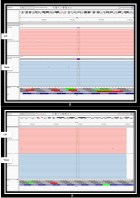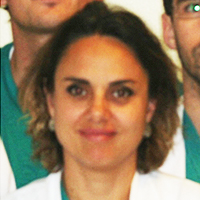Abstract
Research Article
Investigating Anti-Bacterial and Anti-COVID-19 Virus Properties and Mode of Action of Pure Mg(OH)2 and Copper-infused Mg(OH)2 Nanoparticles and Coated Polypropylene Surfaces
Saleh Alkarri*, Melinda Frame, John Cairney, Lee Maddan, Jin H Kim and Jonathan O Rayner
Published: 29 May, 2024 | Volume 8 - Issue 1 | Pages: 008-023
Robust anti-microbial surfaces that are non-toxic to users have widespread application in medical, industrial, and domestic arenas. Magnesium hydroxide has recently gained attention as an anti-microbial compound that is non-toxic, biocompatible, and environmentally friendly. Here we demonstrate melt compound and thermally embossed methods for coating polypropylene with Mg(OH)2 nanoplatelets and copper-infused Mg(OH)2 nanoplatelets. Polypropylene articles coated with Mg(OH)2 nanoplatelets and copper-infused Mg(OH)2 nanoplatelets exhibit a log 8 kill of E.coli within 24 hours. In addition, Mg(OH)2 NPs suspension, at 0.25% reduced SARSCoV-2 virus titers in the solution by 2.5 x 103 PFU/mL or 29.4%, while the Cu-infused Mg(OH)2 NPs suspension, at 0.25% reduced titers by 8.1 x 103 PFU/mL or 95.3%. Fluorescence microscopy revealed that reactive oxygen species (ROS) are produced in bacteria in response to Mg(OH)2 and Cu-infused Mg(OH)2 nanoplatelets which appears to be an important but not the sole mode of anti-microbial action of the nanoplatelets. Plastics with anti-microbial surfaces from where biocides are non-leachable are highly desirable. This work provides a general fabrication strategy for developing anti-microbial plastic surfaces.
Read Full Article HTML DOI: 10.29328/journal.ijcv.1001057 Cite this Article Read Full Article PDF
Keywords:
Anti-microbial activity; E. coli K-12 MG1655; Anti-viral activity; SARS-CoV-2; Copper-infused magnesium hydroxide; Non-leachable; ROS; Compounding; Surface embossing; Dyes
References
- Bacterial infections linked to one in eight global deaths, according to GRAM study. 7.7 million people die from bacterial infections every year – 2022 – ReAct. ReAct. 2022. (acccessed July 15th, 2023). https://www.tropicalmedicine.ox.ac.uk/gram/news/bacterial-infections-linked-to-one-in-eight-global-deaths-according-to-gram-study
- Antimicrobial Resistance Collaborators. Global burden of bacterial antimicrobial resistance in 2019: a systematic analysis. Lancet. 2022 Feb 12;399(10325):629-655. doi: 10.1016/S0140-6736(21)02724-0. Epub 2022 Jan 19. Erratum in: Lancet. 2022 Oct 1;400(10358):1102. PMID: 35065702; PMCID: PMC8841637.
- Rahman MT, Sobur MA, Islam MS, Ievy S, Hossain MJ, El Zowalaty ME, Rahman AT, Ashour HM. Zoonotic Diseases: Etiology, Impact, and Control. Microorganisms. 2020 Sep 12;8(9):1405. doi: 10.3390/microorganisms8091405. PMID: 32932606; PMCID: PMC7563794.
- Ghosh TS, Shanahan F, O'Toole PW. The gut microbiome as a modulator of healthy ageing. Nat Rev Gastroenterol Hepatol. 2022 Sep;19(9):565-584. doi: 10.1038/s41575-022-00605-x. Epub 2022 Apr 25. PMID: 35468952; PMCID: PMC9035980.
- Rodríguez-Lázaro D, Cook N, Ruggeri FM, Sellwood J, Nasser A, Nascimento MS, D'Agostino M, Santos R, Saiz JC, Rzeżutka A, Bosch A, Gironés R, Carducci A, Muscillo M, Kovač K, Diez-Valcarce M, Vantarakis A, von Bonsdorff CH, de Roda Husman AM, Hernández M, van der Poel WH. Virus hazards from food, water and other contaminated environments. FEMS Microbiol Rev. 2012 Jul;36(4):786-814. doi: 10.1111/j.1574-6976.2011.00306.x. Epub 2011 Oct 24. PMID: 22091646; PMCID: PMC7114518.
- Fauvel B, Cauchie HM, Gantzer C, Ogorzaly L. Influence of physico-chemical characteristics of sediment on the in situ spatial distribution of F-specific RNA phages in the riverbed. FEMS Microbiol Ecol. 2019 Feb 1;95(2):fiy240. doi: 10.1093/femsec/fiy240. PMID: 30649274; PMCID: PMC6333113.
- Cassidy SS, Sanders DJ, Wade J, Parkin IP, Carmalt CJ, Smith AM, Allan E. Antimicrobial surfaces: A need for stewardship? PLoS Pathog. 2020 Oct 15;16(10):e1008880. doi: 10.1371/journal.ppat.1008880. PMID: 33057433; PMCID: PMC7561179.
- Choudhury M, Bindra HS, Singh K, Singh AK, Nayak R. Antimicrobial polymeric composites in consumer goods and healthcare sector: A healthier way to prevent infection. 2022; 33(7):1997-2024. DOI: https://doi.org/10.1002/pat.5660.
- Uddin TM, Chakraborty AJ, Khusro A, Zidan BRM, Mitra S, Emran TB, Dhama K, Ripon MKH, Gajdács M, Sahibzada MUK, Hossain MJ, Koirala N. Antibiotic resistance in microbes: History, mechanisms, therapeutic strategies and future prospects. J Infect Public Health. 2021 Dec;14(12):1750-1766. doi: 10.1016/j.jiph.2021.10.020. Epub 2021 Oct 23. PMID: 34756812.
- Zhu Y, Tang Y, Ruan Z, Dai Y, Li Z, Lin Z, Zhao S, Cheng L, Sun B, Zeng M, Zhu J, Zhao R, Lu B, Long H. Mg(OH)2nanoparticles enhance the antibacterial activities of macrophages by activating the reactive oxygen species. J Biomed Mater Res A. 2021 Nov;109(11):2369-2380. doi: 10.1002/jbm.a.37219. Epub 2021 Jun 10. PMID: 34110087.
- Raza S, Matuła K, Karoń S, Paczesny J. Resistance and Adaptation of Bacteria to Non-Antibiotic Antibacterial Agents: Physical Stressors, Nanoparticles, and Bacteriophages. Antibiotics (Basel). 2021 Apr 13;10(4):435. doi: 10.3390/antibiotics10040435. PMID: 33924618; PMCID: PMC8070485.
- Zheng S, Bawazir M, Dhall A, Kim HE, He L, Heo J, Hwang G. Implication of Surface Properties, Bacterial Motility, and Hydrodynamic Conditions on Bacterial Surface Sensing and Their Initial Adhesion. Front Bioeng Biotechnol. 2021 Feb 12;9:643722. doi: 10.3389/fbioe.2021.643722. PMID: 33644027; PMCID: PMC7907602.
- Pan X, Wang Y, Chen Z, Pan D, Cheng Y, Liu Z, Lin Z, Guan X. Investigation of antibacterial activity and related mechanism of a series of nano-Mg(OH)₂. ACS Appl Mater Interfaces. 2013 Feb;5(3):1137-42. doi: 10.1021/am302910q. Epub 2013 Jan 22. PMID: 23301496.
- Ferdous Z, Nemmar A. Health Impact of Silver Nanoparticles: A Review of the Biodistribution and Toxicity Following Various Routes of Exposure. Int J Mol Sci. 2020 Mar 30;21(7):2375. doi: 10.3390/ijms21072375. PMID: 32235542; PMCID: PMC7177798.
- Cheeseman S, Christofferson AJ, Kariuki R, Cozzolino D, Daeneke T, Crawford RJ, Truong VK, Chapman J, Elbourne A. Antimicrobial Metal Nanomaterials: From Passive to Stimuli-Activated Applications. Adv Sci (Weinh). 2020 Apr 6;7(10):1902913. doi: 10.1002/advs.201902913. PMID: 32440470; PMCID: PMC7237851.
- Alkarri S, Sharma D, Bergholz TM, Rabnawaz M. Fabrication methodologies for antimicrobial polypropylene surfaces with leachable and nonleachable antimicrobial agents. Journal of Applied Polymer Science. 2023; e54757.
- Geddes L. Antimicrobial Surface. (accessed 2023 April 22nd).
- Brandelli A, Ritter AC, Veras FF. Antimicrobial Activities of Metal Nanoparticles. In Metal Nanoparticles in Pharma, Rai PDM, Shegokar PDR. Eds. Springer International Publishing. 2017; 337-363.
- Dong C, Song D, Cairney J, Maddan OL, He G, Deng Y. Antibacterial study of Mg(OH)2 nanoplatelets. Materials Research Bulletin. 2011; 46(4):576-582. DOI: https://doi.org/10.1016/j.materresbull.2010.12.023.
- Brandelli A, Ritter A, Veras F. Antimicrobial Activities of Metal Nanoparticles. 2017; 337-363.
- Singha P, Locklin J, Handa H. A review of the recent advances in antimicrobial coatings for urinary catheters. Acta Biomater. 2017 Mar 1;50:20-40. doi: 10.1016/j.actbio.2016.11.070. Epub 2016 Dec 1. PMID: 27916738; PMCID: PMC5316300.
- Alves PM, Barrias CC, Gomes P, Martins MCL. Smart biomaterial-based systems for intrinsic stimuli-responsive chronic wound management. Materials Today Chemistry. 2021; 22:100623. DOI: https://doi.org/10.1016/j.mtchem.2021.100623.
- Sánchez-López E, Gomes D, Esteruelas G, Bonilla L, Lopez-Machado AL, Galindo R, Cano A, Espina M, Ettcheto M, Camins A, Silva AM, Durazzo A, Santini A, Garcia ML, Souto EB. Metal-Based Nanoparticles as Antimicrobial Agents: An Overview. Nanomaterials (Basel). 2020 Feb 9;10(2):292. doi: 10.3390/nano10020292. PMID: 32050443; PMCID: PMC7075170.
- Hu X, Zhang H, Wang Y, Shiu BC, Lin JH, Zhang S, Lou CW, Li TT. Synergistic antibacterial strategy based on photodynamic therapy: Progress and perspectives. Chem Eng J. 2022;450:138129. doi: 10.1016/j.cej.2022.138129.
- Imani MM, Safaei M. Optimized Synthesis of Magnesium Oxide Nanoparticles as Bactericidal Agents. J Nanotechnol. 2019;2019:6063832. doi: 10.1155/2019/6063832.
- Seifi T, Kamali AR. Anti-pathogenic activity of graphene nanomaterials: A review. Colloids Surf B Biointerfaces. 2021 Mar;199:111509. doi: 10.1016/j.colsurfb.2020.111509. Epub 2020 Dec 4. PMID: 33340933.
- Wang L, Hu C, Shao L. The antimicrobial activity of nanoparticles: present situation and prospects for the future. Int J Nanomedicine. 2017 Feb 14;12:1227-1249. doi: 10.2147/IJN.S121956. PMID: 28243086; PMCID: PMC5317269.
- A Kessler, J Hedberg, E Blomberg, I Odnevall. Reactive Oxygen Species Formed by Metal and Metal Oxide Nanoparticles in Physiological Media—A Review of Reactions of Importance to Nanotoxicity and Proposal for Categorization. Nanomaterials 2022, 12(11), 1922; https://doi.org/10.3390/nano12111922
- Luan G, Hong Y, Drlica K, Zhao X. Suppression of Reactive Oxygen Species Accumulation Accounts for Paradoxical Bacterial Survival at High Quinolone Concentration. Antimicrob Agents Chemother. 2018 Feb 23;62(3):e01622-17. doi: 10.1128/AAC.01622-17. PMID: 29229642; PMCID: PMC5826153.
- Motoike K, Hirano S, Yamana H, Onda T, Maeda T, Ito T, Hayakawa M. Antiviral activities of heated dolomite powder. Biocontrol Sci. 2008 Dec;13(4):131-8. doi: 10.4265/bio.13.131. PMID: 19127652.
- Zhu Y, Tang Y, Ruan Z, Dai Y, Li Z, Lin Z, Zhao S, Cheng L, Sun B, Zeng M, Zhu J, Zhao R, Lu B, Long H. Mg(OH)2nanoparticles enhance the antibacterial activities of macrophages by activating the reactive oxygen species. J Biomed Mater Res A. 2021 Nov;109(11):2369-2380. doi: 10.1002/jbm.a.37219. Epub 2021 Jun 10. PMID: 34110087.
- Florez EF, Khajotia S. 4 Interactions between Oral Bacteria and Antibacterial Polymer-Based Restorative Materials. 2020.
- Zhong Y, Xiao H, Seidi F, Jin Y. Natural Polymer-Based Antimicrobial Hydrogels without Synthetic Antibiotics as Wound Dressings. Biomacromolecules. 2020 Aug 10;21(8):2983-3006. doi: 10.1021/acs.biomac.0c00760. Epub 2020 Jul 30. PMID: 32672446.
- Brandrup J, Immergut EH, Grulke EA, Abe A, Bloch DR. Polymer handbook; Wiley New York, 1999.
- Maddan OL. Nanoplatelet copper hydroxides and methods of preparing same. Google Patents: 2008.
- Maddan OL. Hydroxides monolayer nanoplatelet and methods of preparing same. Google Patents: 2022.
- BEI resources web portal > home. BEI resources 2023. (accessed June 10, 2023).
- Perez N. High-Temperature Oxidation. In Electrochemistry and Corrosion Science, Perez, N. Ed.; Springer International Publishing, 2016; 389-425.
- GBD 2019 Antimicrobial Resistance Collaborators. Global mortality associated with 33 bacterial pathogens in 2019: a systematic analysis for the Global Burden of Disease Study 2019. Lancet. 2022 Dec 17;400(10369):2221-2248. doi: 10.1016/S0140-6736(22)02185-7. Epub 2022 Nov 21. PMID: 36423648; PMCID: PMC9763654.
- Alves MM, Batista C, Mil-Homens D, Grenho L, Fernandes MH, Santos CF. Enhanced antibacterial activity of Rosehip extract-functionalized Mg(OH)2nanoparticles: An in vitro and in vivo study. Colloids Surf B Biointerfaces. 2022 Sep;217:112643. doi: 10.1016/j.colsurfb.2022.112643. Epub 2022 Jun 15. PMID: 35759895.
- Dong C, Cairney J, Sun Q, Maddan OL, He G, Deng Y. Investigation of Mg(OH)2 nanoparticles as an antibacterial agent. Journal of Nanoparticle Research. 2010; 12(6):2101-2109. DOI: 10.1007/s11051-009-9769-9.
- Lih E, Kum CH, Park W, Chun SY, Cho Y, Joung YK, Park KS, Hong YJ, Ahn DJ, Kim BS, Kwon TG, Jeong MH, Hubbell JA, Han DK. Modified Magnesium Hydroxide Nanoparticles Inhibit the Inflammatory Response to Biodegradable Poly(lactide- co-glycolide) Implants. ACS Nano. 2018 Jul 24;12(7):6917-6925. doi: 10.1021/acsnano.8b02365. Epub 2018 Jun 8. PMID: 29812907.
- Meng Y, Zhang D, Jia X, Xiao K, Lin X, Yang Y, Xu D, Wang Q. Antimicrobial Activity of Nano-Magnesium Hydroxide Against Oral Bacteria and Application in Root Canal Sealer. Med Sci Monit. 2020 Jun 6;26:e922920. doi: 10.12659/MSM.922920. PMID: 32503962; PMCID: PMC7297022.
- Dong C, He G, Zheng W, Bian T, Li M, Zhang DJML. Study on antibacterial mechanism of Mg (OH) 2 nanoparticles. 2014; 134:286-289.
- Nakamura Y, Okita K, Kudo D, Phuong DND, Iwamoto Y, Yoshioka Y, Ariyoshi W, Yamasaki R. Magnesium Hydroxide Nanoparticles Kill Exponentially Growing and Persister Escherichia coliCells by Causing Physical Damage. Nanomaterials (Basel). 2021 Jun 16;11(6):1584. doi: 10.3390/nano11061584. PMID: 34208716; PMCID: PMC8234494.
- Yu Z, Li Q, Wang J, Yu Y, Wang Y, Zhou Q, Li P. Reactive Oxygen Species-Related Nanoparticle Toxicity in the Biomedical Field. Nanoscale Res Lett. 2020 May 20;15(1):115. doi: 10.1186/s11671-020-03344-7. PMID: 32436107; PMCID: PMC7239959.
- Leung YH, Ng AM, Xu X, Shen Z, Gethings LA, Wong MT, Chan CM, Guo MY, Ng YH, Djurišić AB, Lee PK, Chan WK, Yu LH, Phillips DL, Ma AP, Leung FC. Mechanisms of antibacterial activity of MgO: non-ROS mediated toxicity of MgO nanoparticles towards Escherichia coli. Small. 2014 Mar 26;10(6):1171-83. doi: 10.1002/smll.201302434. Epub 2013 Dec 17. PMID: 24344000.
- Anicˇić N, Vukomanović M, Koklicˇ T, Suvorov D. Fewer Defects in the Surface Slows the Hydrolysis Rate, Decreases the ROS Generation Potential, and Improves the Non-ROS Antimicrobial Activity of MgO. Small. 2018 Jun;14(26):e1800205. doi: 10.1002/smll.201800205. Epub 2018 May 21. PMID: 29782697.
- Li X, Hong X, Yang Y, Zhao J, Diko CS, Zhu Y. Enhanced antibacterial activity of acid treated MgO nanoparticles on Escherichia coli. RSC Adv. 2021 Nov 29;11(60):38202-38207. doi: 10.1039/d1ra06221b. PMID: 35498104; PMCID: PMC9043910.
Figures:
Similar Articles
-
Hypothesis about pathogenic action of Sars-COV-2Del Prete Salvatore*,Marasco Daniela,Sabetta Rosalaura. Hypothesis about pathogenic action of Sars-COV-2. . 2020 doi: 10.29328/journal.ijcv.1001009; 4: 021-022
-
Exploring pathophysiology of COVID-19 infection: Faux espoir and dormant therapeutic optionsVinod Nikhra*. Exploring pathophysiology of COVID-19 infection: Faux espoir and dormant therapeutic options. . 2020 doi: 10.29328/journal.ijcv.1001013; 4: 034-040
-
Identifying patterns in COVID-19: Morbidity, recovery and the aftermathVinod Nikhra*. Identifying patterns in COVID-19: Morbidity, recovery and the aftermath. . 2020 doi: 10.29328/journal.ijcv.1001016; 4: 056-064
-
Can house flies mechanically carry and/or transport sars-cov-2?Alfredo Montes*,Wilfrido Coronell,Rosa Baldiris. Can house flies mechanically carry and/or transport sars-cov-2?. . 2020 doi: 10.29328/journal.ijcv.1001019; 4: 076-078
-
Inhaled statins to combat COVID-19 – prophylactic and treatment approachArchana P Iyer*,Maryam A Al-Ghamdi. Inhaled statins to combat COVID-19 – prophylactic and treatment approach. . 2020 doi: 10.29328/journal.ijcv.1001020; 4: 079-080
-
A Comprehensive review on genomic diversity and epidemiology of COVID-19Zeshan Haider Raza*,Muhammad Ahmed Ihsan,Sahrish Khan,Haroon Zafar,Tayyaba Rehman. A Comprehensive review on genomic diversity and epidemiology of COVID-19. . 2020 doi: 10.29328/journal.ijcv.1001021; 4: 081-095
-
COVID-19 pandemic, recurrent outbreaks and prospects for assimilation of hCoV-19 into the human genomeVinod Nikhra*. COVID-19 pandemic, recurrent outbreaks and prospects for assimilation of hCoV-19 into the human genome. . 2020 doi: 10.29328/journal.ijcv.1001025; 4: 111-115
-
Stages in COVID-19 vaccine development: The Nemesis, the Hubris and the ElpisVinod Nikhra*. Stages in COVID-19 vaccine development: The Nemesis, the Hubris and the Elpis. . 2020 doi: 10.29328/journal.ijcv.1001028; 4: 126-135
-
Exploring COVID-19: Relating the spike protein to infectivity, pathogenicity and ImmunogenicityVinod Nikhra*. Exploring COVID-19: Relating the spike protein to infectivity, pathogenicity and Immunogenicity. . 2021 doi: 10.29328/journal.ijcv.1001029; 5: 001-010
-
Living with ‘Long COVID-19’: The long-term complications and sequelaeVinod Nikhra*. Living with ‘Long COVID-19’: The long-term complications and sequelae. . 2021 doi: 10.29328/journal.ijcv.1001030; 5: 011-021
Recently Viewed
-
Treatment Outcome in Patients with Myofascial Orofacial Pain: A Randomized Clinical TrialAnders Wänman*, Susanna Marklund, Negin Yekkalam. Treatment Outcome in Patients with Myofascial Orofacial Pain: A Randomized Clinical Trial. J Oral Health Craniofac Sci. 2024: doi: 10.29328/journal.johcs.1001046; 9: 001-008
-
Hygiene and Care Protocols for Implant-supported Dental Prostheses in Patients with DiabetesHakob Khachatryan, Emma Boshnaghyan, Sevak Papoyan, Gagik Hakobyan*. Hygiene and Care Protocols for Implant-supported Dental Prostheses in Patients with Diabetes. J Oral Health Craniofac Sci. 2024: doi: 10.29328/journal.johcs.1001047; 9: 009-014
-
Advancing Oral Health and Craniofacial Science through Microchip ImplantsShekufeh Shafeie*. Advancing Oral Health and Craniofacial Science through Microchip Implants. J Oral Health Craniofac Sci. 2024: doi: 10.29328/journal.johcs.1001048; 9: 015-018
-
Texture Analysis of Hard Tissue Changes after Sinus Lift Surgery with Allograft and XenograftMohammad Azimzadeh, Farzad Esmaeili, Narges Bayat, Kasra Rahimipour, Amir Ebrahimpour Tolouei*. Texture Analysis of Hard Tissue Changes after Sinus Lift Surgery with Allograft and Xenograft. J Oral Health Craniofac Sci. 2024: doi: 10.29328/journal.johcs.1001049; 9: 019-022
-
Awareness and Knowledge of Specialists/Trainers and General Dental Practitioners about Medical-Related Osteonecrosis of the JawsAbdulhamit Taha Koca,Mustafa Bayhan,Yunus Ayberk Demir,Ayse Zeynep Zengin*. Awareness and Knowledge of Specialists/Trainers and General Dental Practitioners about Medical-Related Osteonecrosis of the Jaws. J Oral Health Craniofac Sci. 2024: doi: 10.29328/journal.johcs.1001050; 9: 023-031
Most Viewed
-
Evaluation of Biostimulants Based on Recovered Protein Hydrolysates from Animal By-products as Plant Growth EnhancersH Pérez-Aguilar*, M Lacruz-Asaro, F Arán-Ais. Evaluation of Biostimulants Based on Recovered Protein Hydrolysates from Animal By-products as Plant Growth Enhancers. J Plant Sci Phytopathol. 2023 doi: 10.29328/journal.jpsp.1001104; 7: 042-047
-
Sinonasal Myxoma Extending into the Orbit in a 4-Year Old: A Case PresentationJulian A Purrinos*, Ramzi Younis. Sinonasal Myxoma Extending into the Orbit in a 4-Year Old: A Case Presentation. Arch Case Rep. 2024 doi: 10.29328/journal.acr.1001099; 8: 075-077
-
Feasibility study of magnetic sensing for detecting single-neuron action potentialsDenis Tonini,Kai Wu,Renata Saha,Jian-Ping Wang*. Feasibility study of magnetic sensing for detecting single-neuron action potentials. Ann Biomed Sci Eng. 2022 doi: 10.29328/journal.abse.1001018; 6: 019-029
-
Pediatric Dysgerminoma: Unveiling a Rare Ovarian TumorFaten Limaiem*, Khalil Saffar, Ahmed Halouani. Pediatric Dysgerminoma: Unveiling a Rare Ovarian Tumor. Arch Case Rep. 2024 doi: 10.29328/journal.acr.1001087; 8: 010-013
-
Physical activity can change the physiological and psychological circumstances during COVID-19 pandemic: A narrative reviewKhashayar Maroufi*. Physical activity can change the physiological and psychological circumstances during COVID-19 pandemic: A narrative review. J Sports Med Ther. 2021 doi: 10.29328/journal.jsmt.1001051; 6: 001-007

HSPI: We're glad you're here. Please click "create a new Query" if you are a new visitor to our website and need further information from us.
If you are already a member of our network and need to keep track of any developments regarding a question you have already submitted, click "take me to my Query."



















































































































































